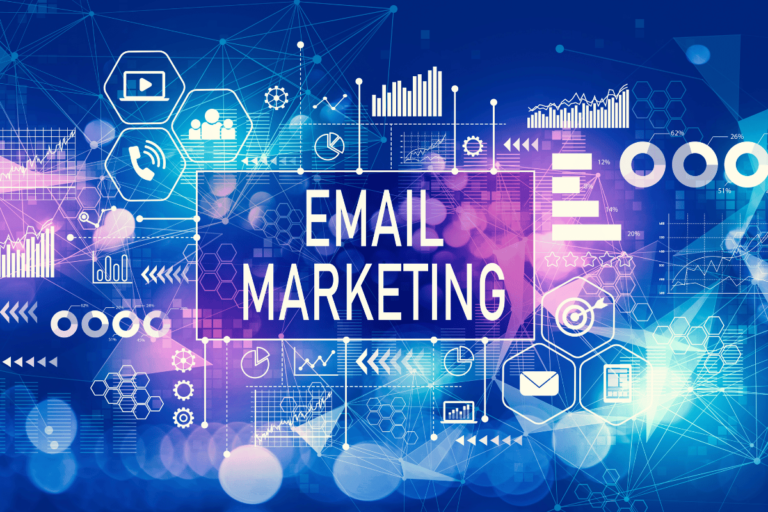Micro-Content Strategies: Using bite-sized content effectively.
Did you know the average human attention span has fallen from 12 seconds in 2000 to just 8 seconds in 2022? This change means we need new ways to keep our audience’s focus. With people’s attention shorter than a goldfish’s, using short, engaging content is key.
Take Dollar Shave Club, for example. Their launch video went viral and made the brand a hit almost instantly. Old Spice commercials also became huge hits, reaching people of all ages. And who forgot Oreo’s Daily Twist campaign, celebrating their 100th anniversary with 100 pieces of micro-content over 100 days?
Today, businesses must make a big impact quickly. They should use catchy videos, impactful images, and engaging graphics made for social media and mobile. Making micro-content for mobile use is not just a good idea, it’s a must.
Key Takeaways
- The average attention span has decreased from 12 seconds in 2000 to 8 seconds in 2022.
- Micro-content strategies are essential for capturing attention quickly in today’s fast-paced digital world.
- Successful campaigns like those by Dollar Shave Club, Old Spice, and Oreo underscore the power of micro-content.
- Succinct storytelling and bite-sized communication can drive significant brand engagement.
- Optimizing micro-content for mobile devices is crucial for on-the-go consumption.
Understanding Micro-Content
Micro-content has changed how we use and interact with digital info. It means short, powerful pieces of content made for quick use. This is key as our attention spans get shorter.
Definition and Examples
The micro-content definition is about content you can quickly consume. Think lists, images, videos, GIFs, and short titles. These are made to pack a lot of info into a small space.
For example, Instagram Reels, TikTok videos, and brief blog posts are micro-content. They focus on being short and engaging, making it easy for users to get the info fast.
Micro-content should be quick to read or watch, under 30 seconds. Images are great at sharing messages with less text. Social media also limits how long messages can be, pushing for short, catchy content.
Benefits of Micro-Content
Using micro-content has big perks. One key advantage is effective communication. Short content is easier for users to handle, making for a better experience. It also helps with brand awareness by being clear and memorable.
Micro-content is also super flexible. It works well in emails, social media, or visuals like images and graphics. This approach grabs attention and is efficient, saving time and resources.
In short, micro-content is all about quick consumption and focused info. Knowing your audience, being concise, and using media wisely can greatly impact your message. WebFX, for instance, has a team of over 100 content writers creating many formats. Micro-content ensures messages are brief yet powerful, keeping communication effective and impactful.
The Evolution of Attention Spans
In today’s fast-paced digital world, our attention spans are getting shorter. This change affects how we consume content. Now, the average person can only focus for about 8.25 seconds. This means we need lean content production to grab and keep our attention.
Impact on Content Consumption
With shorter attention spans, old ways of making content don’t work well anymore. Studies show that visuals are much faster to process than text. In fact, 90% of what our brain gets from information is through sight. So, using great images and videos in our content is key for lean content production.
Using short videos for learning can even make us focus for about 120 seconds. And it helps us remember things better with fun, interactive parts.
Studies on Attention Spans
Many studies have looked into attention span research. They found that we forget about 70% of new info in just 24 hours. And by a week, that number jumps to 90%. This shows how crucial it is to make content short, engaging, and easy to understand.
With more people using mobile devices, making content mobile-friendly is a must. In fact, 60% of all internet searches happen on phones.
As our attention spans change, making lean content production strategies is key. By keeping it simple and using visuals well, digital marketers can connect with people. People today have less time and attention, so we must adapt.
Importance of Visual Appeal in Micro-Content
Micro-content’s success comes from its visual appeal. It uses visual storytelling and dynamic imagery to grab attention. These visuals quickly share messages, fitting well with today’s short attention spans.
Role of Imagery and Graphics
Dynamic imagery and creative graphics are key in micro-content. They turn simple messages into eye-catching highlights. Studies show that using visuals and emojis can greatly increase engagement, highlighting the power of visual storytelling.
- Visibility: Visuals make micro-content stand out in a crowded digital space.
- Brand Recognition: Using imagery helps build a strong brand identity, making it easier for people to remember.
- Emotional Connection: Images that touch emotions stay in viewers’ minds longer, creating stronger connections with the audience.
Video as a Tool for Engagement
With most content being watched on mobile devices, short videos are crucial for engaging people. They use surprise, humor, and interactivity to grab and keep viewers’ attention.
- Increased Interaction: Videos encourage people to like, comment, or share them more.
- Quick Consumption: Short videos fit well with the fast-paced lifestyle of today’s users.
- Shareability: Videos are more likely to be shared, helping the brand reach more people.
Good micro-content uses both dynamic images and videos to capture attention. By focusing on visual appeal, brands make sure their messages are seen and remembered. This approach boosts engagement and sharing in the digital world.
Crafting Concise Messaging
In today’s fast world, we all have short attention spans. That’s why making messages short and clear is key. Using micro-copywriting tips and clear communication helps brands share their messages well and make an impact.
Tactics for Clear Communication
Good communication means making sure your message is clear, direct, and grabs attention. Here are some important tips:
- Simplicity: Choose simple words and skip the jargon to reach more people.
- Focus: Keep your main point clear and skip the extra details that confuse things.
- Visuals: Add pictures, infographics, and videos to help people understand and remember better.
Using Micro-Copywriting Techniques
Micro-copywriting is all about being brief and precise. It makes messages short, catchy, and action-oriented. Here are some ways to do it well:
- Headlines: Make headlines catchy and to the point to quickly share your message.
- Call to Action: Use strong calls to action to get people involved.
- Consistency: Keep your tone and style the same in all your content to make your brand recognizable.
So, making messages concise with clear tactics and micro-copywriting tips is vital for reaching today’s audience. By using these methods, brands can stand out online and get noticed.
Platforms and Formats for Micro-Content
In the world of digital marketing, picking the right content formats on the best platforms is crucial. It boosts social media engagement and makes communication more effective. By choosing wisely, businesses can grab and keep their audience’s attention in today’s fast-paced world.
Social Media Platforms
Sites like Twitter, Instagram, and Facebook are great for micro-content. Twitter’s limit makes messages short and powerful. Instagram and Facebook use pictures and stories to make brands more visible. YouTube, with its 30,000 hours of new content each hour, shows how important videos and live streaming are for staying engaged on social media.
Infographics, short videos, and eye-catching images are top picks. They make data easy to understand and look good. Using influencers, where 61% trust their advice more than brand content, can also help brands reach more people and gain trust.
Email and Mobile Notifications
Email and mobile notifications are strong for micro-content. They send direct, to-the-point messages to users. With people getting 131 emails a day, making your subject lines and content stand out is key. Personalized mobile alerts give updates and calls to action right away, which gets people to engage quickly.
Using eye-catching visuals and urgent offers in mobile notifications can really increase engagement. These tactics aim to grab attention in under 30 seconds, perfect for micro-content.
Choosing the right mix of platforms and formats is essential for better audience engagement. It makes micro-content strategies work well in today’s fast digital world.
Micro-Content Strategies
The digital world is always changing. Using micro-content strategies is key to grab people’s short attention spans. Let’s look at two important ways to do this: content atomization and integrating snackable content into your plans.
Content Atomization
Content atomization means breaking big content into smaller pieces. This makes the most of what you already have, like blog posts or e-books. By turning a blog post into social media posts, infographics, and short videos, you can share your message in many ways.
- Microcontent can be made fast to join in on current topics and events.
- It fits well with today’s fast-paced, mobile lifestyle.
- Breaking content into smaller pieces helps you reach different people better, making them more interested.
Integrating Snackable Content
Integrating snackable content is another smart move. This type of content is short, fitting right into the quick scrolls on platforms like Instagram, TikTok, and Twitter. Instead of long eLearning modules, short 5 to 8 minute pieces can keep learners interested by sharing important info in easy-to-digest chunks.
- It makes existing content more fun and interactive.
- It lets you try out different formats like audio, video, simulations, and games.
- It’s great for busy people, letting them learn in short sessions.
Using a bite-sized content strategy helps people understand and remember information better. It also makes making content easier and more efficient. This way, your content connects better with today’s audience, leading to more engagement and participation.
By using content atomization and snackable content integration, brands can make their messages stronger and reach more people.
Using Emotions in Micro-Narratives
Adding emotions to micro-narratives is key to making content that really connects with people. These stories are not just memorable; they get shared a lot, which boosts engagement and reach.
Impact of Emotional Resonance
Instagram, Twitter, and TikTok are huge, with over 200 million users every day. Brands that make emotional connections in their stories reach a huge, active audience. Short videos on these platforms get way more engagement than long ones, showing people love quick, touching stories.
Emotionally strong micro-content gets shared a lot, increasing brand reach by 50%. People want to share things that make them feel something strong, like laughter, sadness, or inspiration.
Case Studies with Emotional Impact
Looking at case studies shows how emotional stories work well. The Dollar Shave Club’s launch video was funny and told a strong brand story, going viral and making people notice the brand. Oreo’s Daily Twist campaign used humor to connect with people, getting them to interact and love the brand more.
These stories show how using emotions in micro-narratives can boost user engagement by 40%. Adding fun stuff like polls and quizzes helps too. Also, these stories help brands get more visible online, with a 30% increase in visibility thanks to social media.
The main point is, emotional connections make micro-narratives powerful. By adding feelings, brands can make content that not only grabs attention but also gets people to act.
Optimizing for Mobile Devices
Mobile content marketing is growing fast. Making micro-content work well on mobile devices is key. It’s important to focus on mobile design and make sure content loads quickly. This makes users happy and keeps them engaged on different platforms.
Mobile-First Design Principles
Mobile-first design means making content for smaller screens first. This way, users get a smooth experience on any device. Key principles include:
- Responsive web design: Changes size to fit different screens, making layouts fluid and adaptable.
- Simple navigation: Features like accordion menus, clear logos, and search bars make it easy to use.
- Concise information: Forms and blog posts should be easy to read and quick to get through.
Following these rules helps brands make their mobile content better. This leads to more people engaging with the content.
Ensuring Fast Loading Times
Pages that load fast keep mobile users happy. If pages take more than three seconds to load, 53% of users leave. Here are ways to make pages load faster:
- Lazy-loading images: Only loads images when they are seen on the screen.
- File compression: Makes files smaller for faster downloads and less data use.
- Multiple image sizes: Scales images for different devices to reduce load times.
Using these methods ensures content loads quickly. This stops users from leaving and increases engagement. Adding these to your mobile design makes your content work better on mobile.
Measuring the Success of Micro-Content
In today’s digital marketing world, using micro-content wisely is key. It’s important to track its success closely. By looking at metrics like impressions, engagement rates, click-through rates, and conversion rates, we can see how well it works. These numbers give us deep insights into how people interact with short-form content.
Key Metrics to Track
To understand micro-content, focus on a few key metrics. Impressions show how often people see your content. Engagement rates, like likes, shares, and comments, tell us how much people interact with it. Click-through rates (CTR) show how often people click on links in your content. And conversion rates track how often these clicks lead to actions, like buying something or signing up.
Tools for Analysis
To analyze these metrics well, using the right tools helps a lot. Google Analytics, Hootsuite, and BuzzSumo are great for this. They give detailed analytics and make it easy to understand the data. With these tools, content creators can make sure their micro-content hits the mark with their audience.
Source Links
- The Rise of Micro-Content: Strategies for Capturing Attention in Seconds
- Micro Content: Bite-Sized Impact for Your Audience
- Micro-Content Overview: How to Optimize Your Web Content
- Micro Content: 5 Unique Ways To Create Compelling Micro Content – WPDeveloper
- Short Attention Spans and Long-Term Retention: The Evolution of Learning in the Digital Space
- Marketing that Overcomes Short Attention Spans | Paradux Media Group
- The Rise of Micro Content Strategy and Its Big Impacts
- The Benefits of Micro-Content
- The Power of Micro-Content: Engaging Bites for Busy Audiences
- The World Of Micro-Content: Crafting Bite-sized Pieces » Ranking Articles
- Micro-Content: The Best Way to Diversify Your Content Strategy | Linkilo
- The Ultimate Guide to Micro-Content
- Micro-Content: The Best Way to Diversify Your Content Strategy
- 10 Ways Microcontent Benefits Your Brand and Expands Your Reach
- How to Create Learner Engagement Through Micro Content: 10 Tips and strategies worth exploring
- The Power of Micro-content: Short Form Big Impact – VerboLabs
- Leveraging Micro-Stories to Build Engagement, Inclusion, and Neural Networking in Immunology Education
- Mobile Content Marketing: A Practical Guide
- The Power of Micro-Moments: Winning the Mobile-First Consumer – OAK
- The Power of Micro-Content in Personal Branding
- Micro-Content Strategies for 2024






